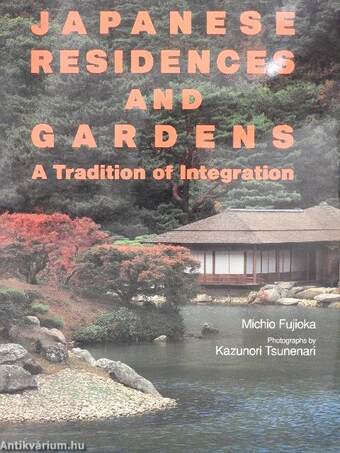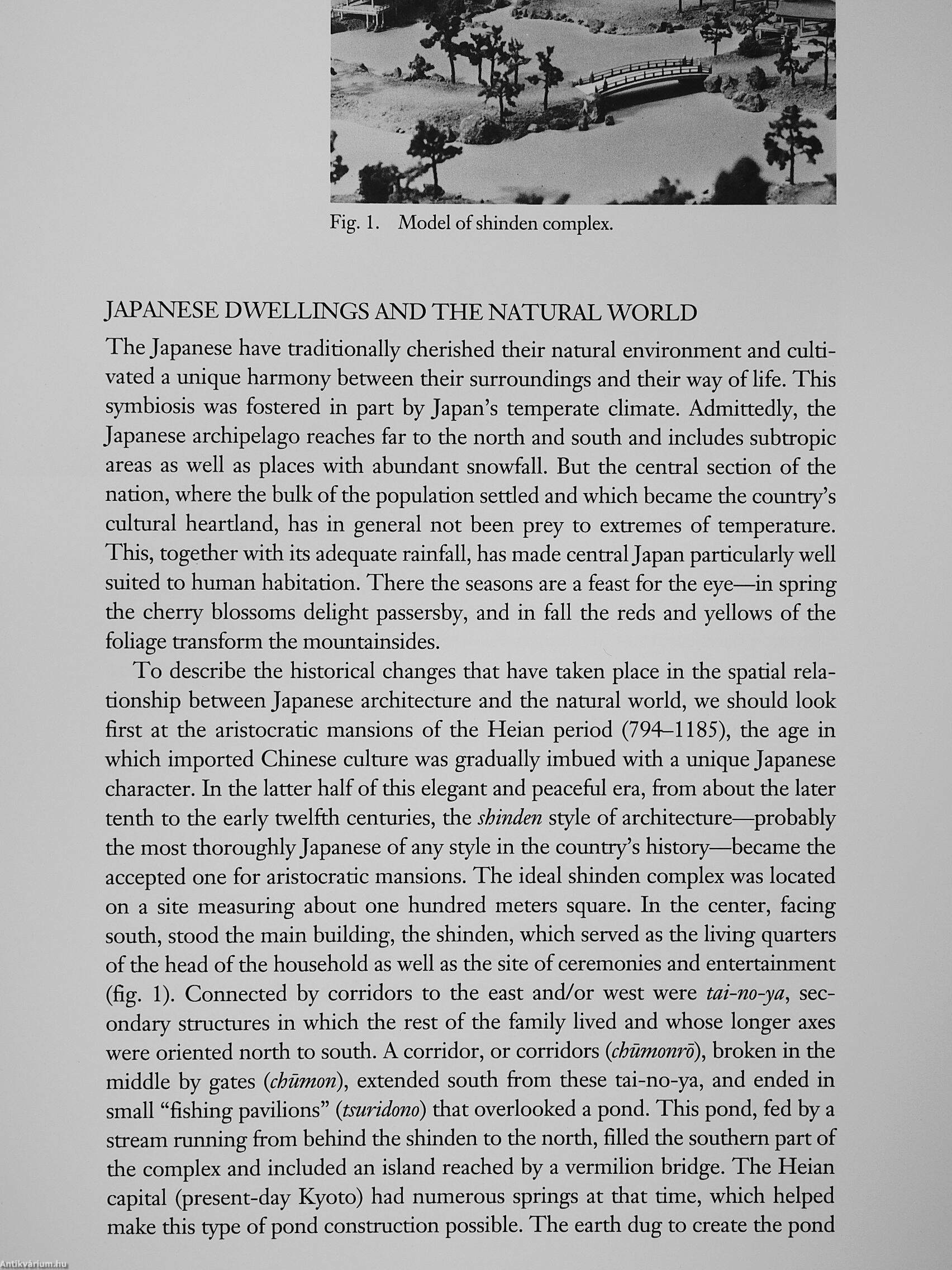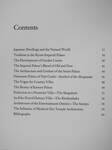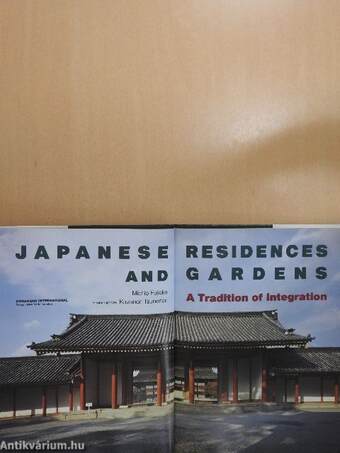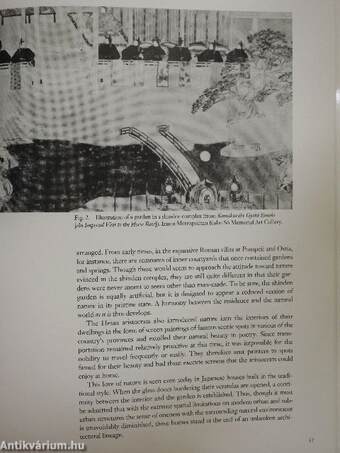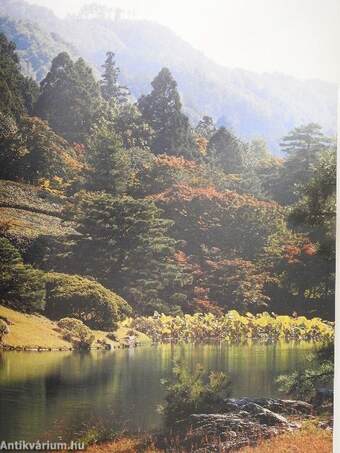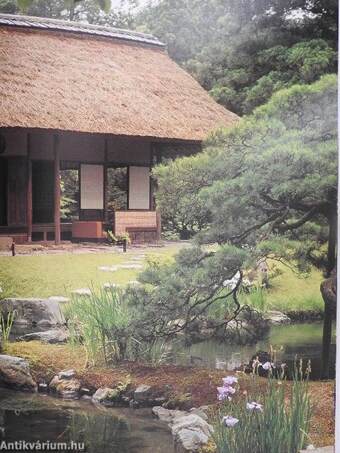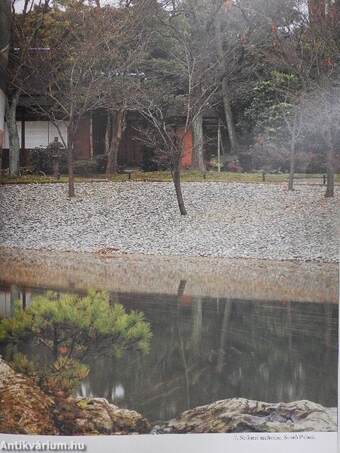1.072.878
kiadvánnyal nyújtjuk Magyarország legnagyobb antikvár könyv-kínálatát

VISSZA
A TETEJÉRE
JAVASLATOKÉszre-
vételek
Japanese Residences and Gardens
A Tradition of Integration
| Kiadó: | Kodansha International |
|---|---|
| Kiadás helye: | Tokió-New York-London |
| Kiadás éve: | |
| Kötés típusa: | Vászon |
| Oldalszám: | 64 oldal |
| Sorozatcím: | |
| Kötetszám: | |
| Nyelv: | Angol |
| Méret: | 30 cm x 24 cm |
| ISBN: | 4-7700-1977-7 |
| Megjegyzés: | Fekete-fehér és színes fotókkal. |
naponta értesítjük a beérkező friss
kiadványokról
naponta értesítjük a beérkező friss
kiadványokról
Előszó
TovábbFülszöveg
JAPANESE RESIDENCES
AND GARDENS
One of the greatest contributions of Japanese culture to the world in the coming decades may well be the integration of the human dwelling place with the world of nature—that is, the spiritual and spatial union of home and garden. Unlike other cultures, where man has sometimes taken an ambivalent or even antagonistic attitude toward namre, the Japanese have throughout their history maintained an unequivocal and deep-rooted desire for harmony. This attitude is evident in virtually all their Uterary and fine arts, but it is most apparent, and most readily appreciated, in the practical art of the integrated house and garden. Here, there is no need for labored commentary, involved exposition, or scholarly annotation—anyone with two eyes and human intuition will instinctively feel the beauty and significance of such a union. If, in the past, the Japanese have borrowed and assimilated their share of culture from abroad, in the intimately related home... Tovább
Fülszöveg
JAPANESE RESIDENCES
AND GARDENS
One of the greatest contributions of Japanese culture to the world in the coming decades may well be the integration of the human dwelling place with the world of nature—that is, the spiritual and spatial union of home and garden. Unlike other cultures, where man has sometimes taken an ambivalent or even antagonistic attitude toward namre, the Japanese have throughout their history maintained an unequivocal and deep-rooted desire for harmony. This attitude is evident in virtually all their Uterary and fine arts, but it is most apparent, and most readily appreciated, in the practical art of the integrated house and garden. Here, there is no need for labored commentary, involved exposition, or scholarly annotation—anyone with two eyes and human intuition will instinctively feel the beauty and significance of such a union. If, in the past, the Japanese have borrowed and assimilated their share of culture from abroad, in the intimately related home and garden they have a contribution to make in return. In light of the ever-increasing disorientation of modem people's feelings for their natural surroundings, and their resentment of this disorientation, the contribution could not be more timely.
The history of the integrated Japanese residence and garden is multifaceted and manifold. Just as there has been no one style of Japanese residence nor one style of garden throughout the country's history, neither has there been only one style of integration of the two, but rather a rich variety. There are mansions with large-scale gardens carefiilly fashioned to give the illusion of namre in its pristine state. There are compounds of buildings in imperial palaces that have small court gardens of gravel and a single bush in the space between them. There are gardens created to be viewed from a single room in which bushes, rocks, and gravel are suggestive of the great world of forests, mountains, and cataracts. There are similar gardens of rocks and gravel so abstract in arrangement that the connection with nature seems less representational than metaphysical. This variety may come as a surprise, yet it should also have a liberating effect to know that the Japanese have not been tied to rigid, unalterable rules and formulas in the creation of their integrated masterpieces.
Written and illustrated by the two most eminent figures in their fields, the present book gives a concise overview of the history of Japanese residences and their gardens from the tendi to the nineteenth
iMMÉa
centuries, a span of time representing the very core of the Japanese tradition. As an introduction for those approaching the subject for the first time, there is no book more accessible or readable. For those who wish to round out their knowledge of this aspect of Japanese culture, there is none more lucid or concise. And as a source of ideas for those concerned with their own homes and surroimdings, there are few books of this historical level that are as stimulating and suggestive.
Author and Photographer: Dr. Michio Fujioka, professor emeritus of the Tokyo Institute of Technology and senior specialist on the Japanese government's Council for the Protection of Cultural Properties, was the leading authority on Japanese architecture of the premodern period, particularly castle and shorn architecture. He died in 1988. Kazunori Tsunenari, a preeminent photographer of Japanese architecture, has many books to his credit, among which that on teahouses and related architecture, entitled Sukiya (Mainichi Shinbunsha), is a superlative example of his work. Vissza
Témakörök
- Idegennyelv > Idegennyelvű könyvek > Angol > Művészetek > Építészet
- Idegennyelv > Idegennyelvű könyvek > Angol > Természettudományok > Egyéb
- Idegennyelv > Idegennyelvű könyvek > Angol > Művelődéstörténet
- Idegennyelv > Idegennyelvű könyvek > Angol > Néprajz
- Művelődéstörténet > Civilizációtörténet > Keleti
- Művelődéstörténet > Kultúra > Története
- Néprajz > Folklór (szellemi néprajz) > Népi kultúrák > Ázsia
- Néprajz > Tárgyi néprajz > Népi építészet
- Néprajz > Tárgyi néprajz > Életmód > Lakáskultúra
- Természettudomány > Növényvilág > Kertépítés, parképítés
- Művészetek > Építészet > Kontinensek szerint > Ázsia > Távol-Kelet
- Művészetek > Építészet > Idegen nyelv > Angol
- Művészetek > Építészet > Épületek > Családi házak > Kert
- Művészetek > Építészet > Építészettörténet > Külföldi



